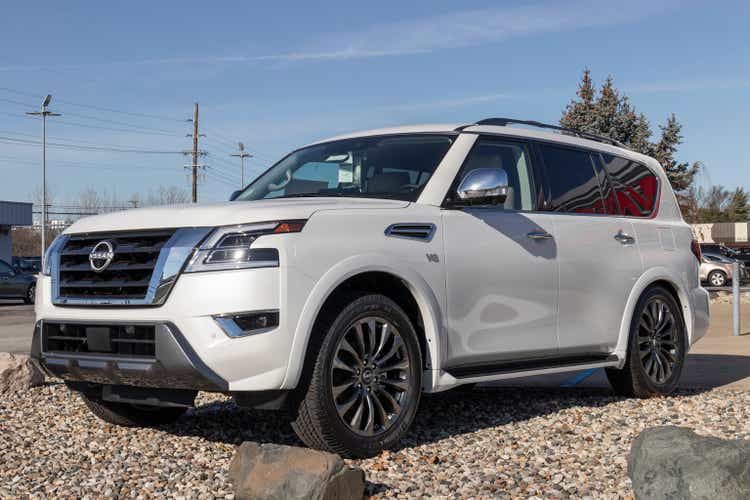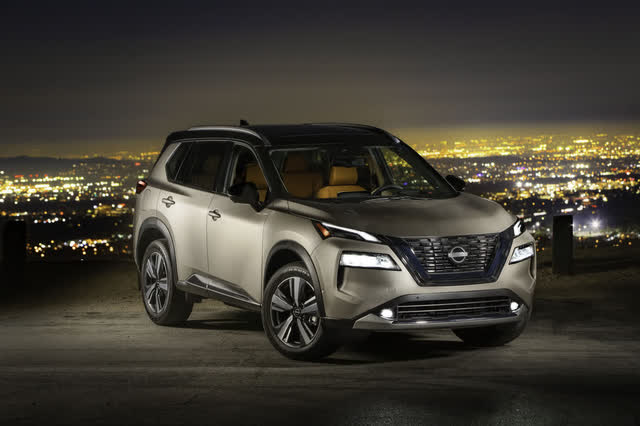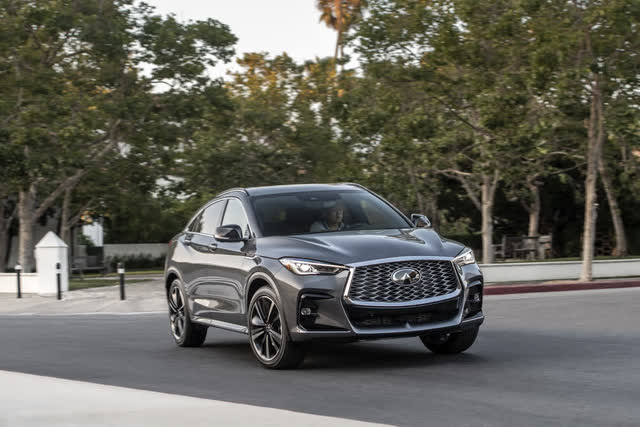Nissan Armada SUV display. Nissan is part of the Renault Nissan Alliance. jetcityimage/iStock Editorial via Getty Images
Investors in Nissan Motor Co. (OTCPK:NSANY) stock have never had much to cheer about, the up-and-down fortunes of the Japanese automaker mainly an exercise in frustration, disappointment and shattered hopes.
Nissan has long been a company with respected manufacturing and engineering capabilities – supported by a hardy band of enthusiasts for its models – that lacked the marketing and business expertise to compete in the West with rivals such as Toyota (TM), Honda (HMC) and, in later years, Hyundai (OTCPK:HYMLF).
From 1999 to 2018, a financial rescue from French automaker Renault SA (OTCPK:RNSDF) saved Nissan from bankruptcy; an alliance of the two automakers intermittently reflected glimmers of promise – followed inevitably by reversal, confusion and a series of poor decisions by top management. This nearly two-decade period was capped by the shocking arrest in Japan of Carlos Ghosn, the alliance’s chairman, on charges of financial mismanagement.
Lebanese hideaway
Today, Ghosn is in exile in Beirut, a fugitive of the Japanese justice system. Meantime, Nissan and Renault executives reportedly are close to an agreement – following four years of differences and disarray – that could restore the alliance to a more productive footing. In that event, NSANY ADRs would conceivably respond from the bargain-basement level at which they’ve languished since a precipitous 30% decline in February.
The major structural inequality of the original terms of the alliance stems from the dissimilar reciprocal ownership stake: Nissan owns 15% of Renault and Renault owns 43% of Nissan. That proportion seemed more or less correct more than 20 years ago when Nissan was a basket case and Renault, led by Ghosn, was effectuating the rescue.
But over the years, Nissan improved from a basket case to equal or perhaps superior stature to Renault, in terms of financial results. Hence, the dominance of the French partner, reflected by the larger equity stake, stoked resentment at Nissan and in some quarters of the Japanese government and society.
According to media reports, Renault now is prepared to reduce its ownership stake in Nissan to 15%. Renault plans to spin off a unit dedicated to EVs and software, based in France. Additionally, China’s Zhejiang Geely Holding Group would partner with Renault on conventional and hybrid engines outside of France. As part of the deal, Nissan will invest up to $750 million in Renault’s EV spinoff, called Ampere.
Troubled marriage
For years prior to Ghosn’s departure, the alliance was plagued with sporadic reports of non-cooperation between the partners, undercutting the original premise of their relationship, which was to create economies of scale and eliminate overlapping products and territories as a means of reducing capital costs.
While Renault has been relegated to relatively minor status in regions outside of France, where it maintains a 25% share of market, Nissan remains a presence – albeit non-dominant – in the U.S., China, Europe and Latin America.
Renault, which includes the Dacia brand, sold 481,000 vehicles in the third quarter worldwide, down 2.4% from the year before.
According to Nissan’s latest global report, it sold 254,842 vehicles in August alone, down 15.5% from a year earlier, suggestive of a roughly 750,000 quarterly rate.
2023 Nissan Rogue (Nissan Motor Co.)
In the U.S., Nissan’s biggest-selling model is the midsize Rogue SUV, which accounted for sales of 130,135 in the third quarter, down 44.5% from the year-earlier quarter.
The 2023 Rogue, which starts at a price of $27,360, is a highly rated midrange family-oriented SUV that competes with Honda CR-V and Toyota RAV4. It comes with a Nissan warranty of three years and 36,000 miles, plus a Rogue warranty of 5 years or 60,000 miles on the powertrain.
The 1.5-liter three-cylinder variable compression turbocharged engine develops 201 horsepower and achieves 37 mpg on the highway, which is impressive for a non-hybrid vehicle. Nissan engineers have done a good job limiting the noise of the CVT – continuous variable transmission – which has been a complaint on earlier CVT versions.
This is the third generation of the Rogue, which debuted in 2021. Since its first generation, introduced in 2007 for the 2008 model year, Rogue has been built in Nissan’s Smyrna, Tennessee plant, as well as in Japan.
Fancy cars
On the premium side of the product ledger, Nissan has struggled mightily since 1989 to create a luxury franchise for its vehicles, which is a shame, because the models themselves are competitive with other luxury models in everything except prestige – a key attribute.
Infiniti, the brand, was introduced at roughly the same time as Toyota Motor Corp.’s Lexus brand – though with nothing close to Lexus’s success.
Whether Infiniti’s inability to break through to consumers at the level of other luxury brands can be attributed to faulty marketing or, perhaps, the highly inspired branding from the likes of BMW (OTCPK:BMWYY) and Mercedes-Benz (OTCPK:MBGAF) is difficult to determine categorically. A new era of battery electric vehicles (BEVs) may give Infiniti the chance to refresh its image and strategy to better effect.
Through September of this year, Infiniti sold 33,046 vehicles in the U.S., down 30.6%. Its most popular model, responsible for about a third of the units sold, is the QX60 crossover, which starts at about $50,000.
I had a chance to drive Infiniti’s smaller QX55 crossover – or SUV, if you prefer – earlier this year and found it to be a thoroughly comfortable, responsive and well-appointed vehicle for city and highway driving.
2023 Infiniti QX55 (Nissan Motor Co.)
From an exterior styling standpoint, QX55 draws inspiration from the Infiniti FX, introduced in 2003. The swoopy lines are attractively distinctive and imbue the model with a luxury look.
The power plant is a turbocharged 2.0-liter four-cylinder engine joined to a CVT. The combination, together with all-wheel-drive on 20-inch wheels, delivered a pleasant, confident driving experience through mountainous terrain in Colorado and on the state’s highway system, which features abrupt changes in altitude and weather conditions.
The QX55’s Sensory trim edition, a costlier add-on to this model, delivers all of the available safety equipment such as a heads-up display, rain-sensing windshield wipers and forward emergency braking with pedestrian detection. The ProPILOT Assist feature is a combination of adaptive cruise control that maintains speed and distance from vehicles ahead with lane centering.
Since Infiniti models aren’t top sellers, they often are the choice for consumers who are looking for value and discounts as opposed to brand prestige – making QX55 an especially attractive choice.
Quick payoff?
An investor who’s looking for a short-term gain in NSANY shares should continue to watch headlines from Paris and Tokyo to determine whether the unconfirmed reports of a realigned alliance are about to become reality. It’s hard to imagine that this development won’t boost the stock to some extent.
Whether a productive alliance would materially improve prospects for Renault’s shares – I have no opinion.
With respect to a longer-term investment, Nissan would need to gain market share along with better pricing of its models to drive earnings in the all-important U.S. market. Such a development would take time; promising signs of long-term earnings growth would need at least a year to materialize once the alliance is fixed. Thus, it’s way too soon to recommend this stock as a long-term investment.


Be the first to comment